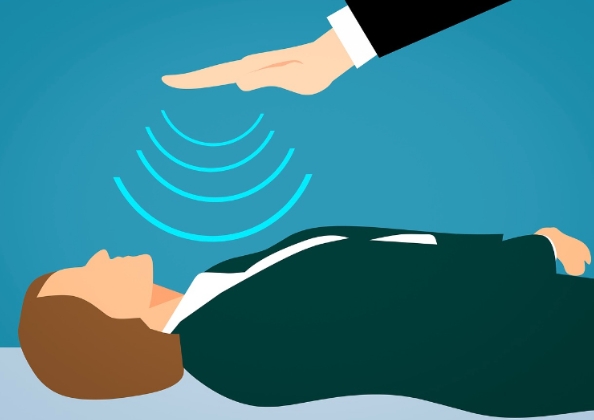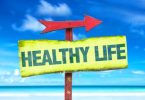Holistic medicine is about the mind, body, and soul. This rudimentary definition doesn’t do justice to the concept of holistic medicine. The eponymous name, ‘holistic,’ gives a good indication of what type of treatment a patient can expect. It’s not specific; it’s holistic.
A patient presenting with a mental health disorder would be evaluated from top to bottom, not simply prescribed antianxiety medication or antidepressants. Lifestyle, environment, relationships, stress factors, and various other elements might be considered when diagnosing and treating patients.
That’s where holistic medicine is all about the mind, body, and soul. From a philosophical perspective, we are the sum total of our inner sanctum and our external environment. To this end, holistic medicine serves as a complete treatment regimen for mental health disorders and physical ailments. Holistic medical practitioners are focused on prevention first and foremost.
Holistic Medicine for Self-Healing
Holistic medicine aims to provide patients with the tools they need to heal themselves. It’s a proactive approach to treatment that has been around for centuries. The history of holistic medicine is long and varied. The term ‘holistic’ was first coined in the 1930s by Dr. Rudolph Ballentine. He used it to describe the treatment of the whole person, not just the symptoms of an illness or disease.
In the 1970s, Dr. Andrew Weil popularized ‘holistic health’ when he wrote about integrative medicine. Integrative medicine is a type of healthcare that combines conventional Western medicine with complementary and alternative therapies (CAM). The goal of integrative medicine is to promote optimal health and healing. CAM therapies include acupuncture, chiropractic care, homeopathy, massage therapy, naturopathy, etc.
Some CAM therapies are widely accepted by the medical community, while others are considered controversial. However, acupuncture is one of the most popular CAM therapies in the United States. According to a survey conducted by the National Center for Complementary and Integrative Health (NCCIH), 3.1 million adults in the U.S. used acupuncture in 2012.
The use of acupuncture as a form of pain relief dates back thousands of years. Acupuncture is based on the belief that energy pathways (meridians) throughout the body carry a vital life force (qi). Illness or disease occurs when there is an imbalance in qi flow. Acupuncture is said to restore balance by stimulating specific points along these energy pathways with thin needles inserted into the skin.
Chiropractic care is another popular CAM therapy used to treat pain and improve overall health and well-being. Chiropractors use manual manipulation to realign joints and bones moved out of place (subluxations). This helps relieve pain, improve range of motion, and reduce inflammation. According to a survey conducted by NCCIH, 18 million adults in the U.S received chiropractic or osteopathic manipulation in 2012.
Chiropractic care is most often used to treat back pain, neck pain, headaches, and musculoskeletal pain syndromes such as fibromyalgia or carpal tunnel syndrome. Massage therapy is another popular CAM therapy that can be used for relaxation or therapeutic purposes. Massage therapists use touch to manipulate muscles and soft tissues.
This can help relieve pain, improve range of motion, and reduce stress, anxiety, and depression. Homeopathy is a CAM therapy that uses diluted substances from plants, minerals, or animals. Homeopathic remedies are said to stimulate the body’s healing response. Homeopathy is often used to treat colds, flu, allergies, anxiety, depression, and insomnia.
There are many other types of CAM therapies available. These include but are not limited to aromatherapy, Ayurveda, biofeedback, chelation therapy, colon hydrotherapy, craniosacral therapy, and energy healing therapies such as reiki or therapeutic touch hypnosis, and meditation.
Do Doctors Combine Holistic Medicine with Traditional Medical Treatments?
One of the reasons for this increase is the growing acceptance of these therapies by the medical community. As a result, more and more healthcare providers incorporate CAM therapies into their practices. In addition, insurance companies are starting to cover some CAM therapies.
The use of CAM therapies is not without its critics. Some people argue that these therapies are unproven and not backed by scientific evidence.
There is some truth to this claim. Many CAM therapies have not been rigorously studied. However, a growing body of research on CAM therapies is growing, and more studies are being conducted every year. Some people also argue that CAM therapies are a waste of money. This may be true in some cases, but it’s important to remember that not all CAM therapies are expensive.
Some, such as meditation or yoga, can be done at home for free or at a very low cost. Others argue that CAM therapies are dangerous and can cause serious side effects. While it’s true that any treatment has the potential to cause side effects, this is usually due to improper use or an underlying health condition.
When used correctly, most CAM therapies are safe and effective. However, it’s important to remember that holistic medicine is not an either/or proposition. Holistic medicine is not an alternative to conventional medicine; it’s complimentary. Both approaches have their strengths and weaknesses. By combining the two, we can provide patients with the best possible care.
Holistic Medicine to Treat Mental Health Disorders
We can use holistic medicine to treat various mental health disorders, including anxiety, depression, and post-traumatic stress disorder (PTSD).
Obsessive Compulsive Disorder
Obsessive-Compulsive Disorder (OCD) is a type of anxiety disorder that is characterized by intrusive, unwanted thoughts (obsessions) and repetitive behaviors (compulsions). People with OCD often feel trapped and helpless and may go to great lengths to avoid triggering their obsessions.
Obsessive-compulsive disorder symptoms can vary from person to person but commonly include obsessive thoughts about germs or contamination, excessive hand-washing or cleaning, hoarding, and compulsively checking things. These obsessions and compulsions can interfere with work, school, and personal relationships.
OCD is usually treated with medication and therapy. Holistic approaches such as relaxation techniques, yoga, meditation, and aromatherapy can also help manage symptoms.
Anxiety
Anxiety is a normal emotion that everyone experiences from time to time. However, some people experience chronic anxiety that interferes with their daily lives. According to the National Institute of Mental Health (NIMH), about 18% of adults in the United States have an anxiety disorder. There are many different types of anxiety disorders, each with its own set of symptoms. Common types include generalized anxiety disorder (GAD), social anxiety disorder (SAD), and panic disorder.
Symptoms may include persistent worry, irritability, difficulty concentrating, muscle tension, and sleep problems. We can treat anxiety disorders with medication, therapy, or both. Holistic approaches such as relaxation techniques, yoga, and meditation can also help manage symptoms.
Depression
Depression is more than just feeling sad or down. It’s a severe medical condition that affects how you feel, think, and behave. According to the NIMH, about 16 million adults in the United States have depression in any given year. In addition, women are more likely than men to experience depression.
Symptoms of depression can include:
- Persistent sadness or emptiness.
- Loss of interest in activities you once enjoyed.
- Sleep problems.
- Fatigue.
- Difficulty concentrating.
- Thoughts of death or suicide.
Depression can make it hard to function at work or home and impact your relationships.
Depression is typically treated with medication and therapy, but many complementary and alternative treatments can also be helpful. These include omega-3 supplements, light therapy, acupuncture, exercise, and meditation. Some research suggests that these holistic approaches may be as effective as medication for mild to moderate depression.
For severe depression, however, medication is usually necessary in addition to other treatments.
Indeed, holistic treatment can be used with medication to treat mental health disorders and physical ailments alongside traditional medical options.








